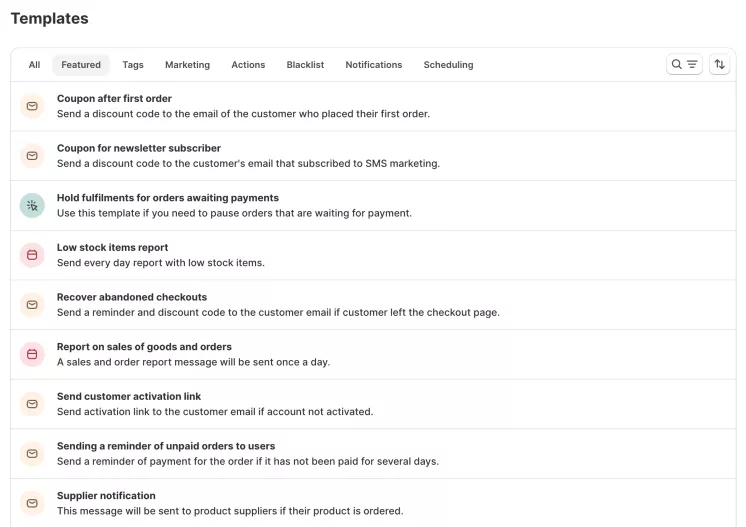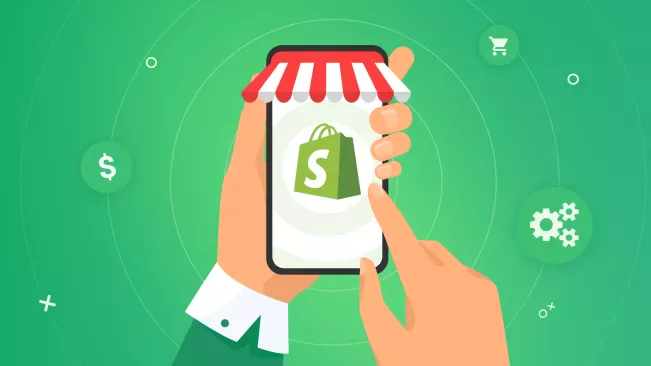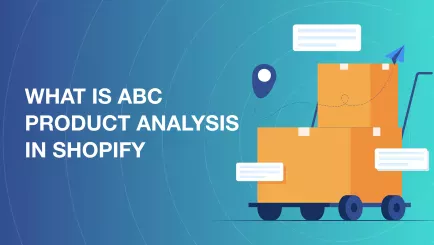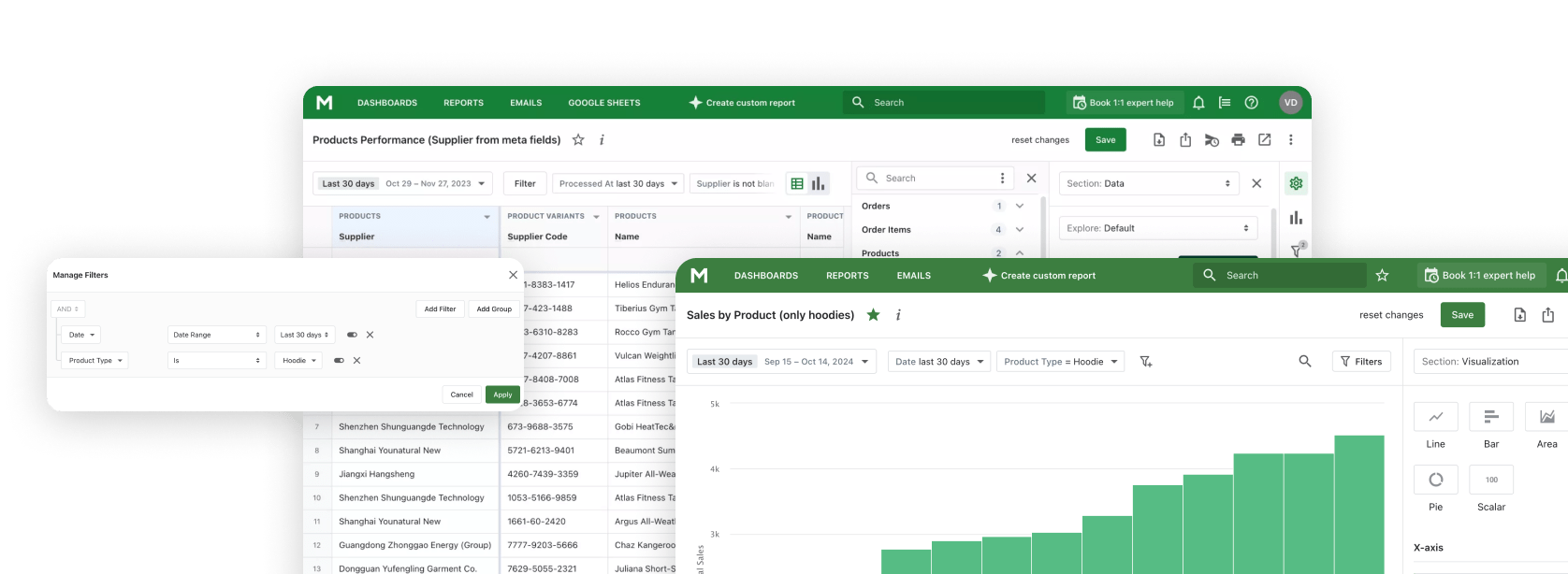The process of improvement never ends. The journey toward the next one begins as soon as a short-term goal is achieved.
Henry Ford's introduction of assembly line production was a groundbreaking moment for all manufacturing industries. In the nearly 100 years since then, much has changed. Yet, the process of unification and automation remains key to achieving more. Workers are replaced by intelligent systems, and assembly lines evolve into sequences of algorithm-driven operations.
In this article, we will explore the use of automation in Shopify, provide examples of its application, discuss the limitations of existing approaches, and offer several tips on implementing automation in your store.
What is Shopify automation?
First, let's define the term "automation."
Automation is the process of sequentially performing specified actions to achieve an expected result.
Behind this dry definition lies the answer to a key question: "Is automation possible?"
Automation requires three essential components:
- Process and Sequence – Understanding what needs to be done and in what order.
- Execution – Any element of automation can be executed automatically.
- Repeatability – The process must be repeatable without changes (i.e., not unique every time).
If you don’t yet understand how to implement these three components, it’s time to start thinking about it.
Examples of Shopify automation
In a Shopify store, it is possible to automatize a lot of repetitive tasks to save time and minimize manual work. Automation of tasks can be used in distribution of orders, updating of inventory, sending of customer email, marketing campaigns and even customer support. The following are some of the realistic uses of Shopify automation - both introductory level and advanced - that explain how these processes can streamline operations and enhance efficiency:
- Order Tagging and Prioritization: Automatically tag incoming orders based on certain criteria (for example, high-value orders, pre-orders, or destination) instead of sorting them by hand. This ensures that special cases (like VIP customers or international shipments) are flagged immediately for appropriate handling. By automating order tagging, you save the time it would take to review each order and can prioritize fulfillment workflows more efficiently.
- Inventory Updates and Low-Stock Alerts: Use automation to keep inventory in check without constant manual monitoring. For example, when a product’s stock falls below a threshold, the system can instantly send a low-stock email to your team or even create a purchase order to your supplier for restocking. You can also set workflows to hide out-of-stock products from your storefront and republish them when inventory is replenished. These automated inventory updates prevent stockouts and save you from having to continually audit stock levels.
- Customer Email Sequences: Automate your customer communications by setting up triggered email sequences. For instance, welcome new customers with an automatic email series, send shipping confirmations and post-purchase follow-ups, or request a review a week after delivery – all without manual intervention. These email automations ensure timely, personalized outreach (such as thank-you messages or win-back offers) that keep customers engaged while you focus on other tasks.
- Marketing Campaign Automations: Many marketing tasks can be put on autopilot to drive sales. For example, you can configure abandoned cart email or SMS reminders to recover lost sales, automatically offer a discount code to lapsed customers as a win-back campaign, or cross-sell related products through personalized recommendations. Once set up, these marketing automations run in the background to nurture leads and encourage repeat purchases, saving you the effort of managing each campaign manually.
- Automated Report Generation: Generating reports can be time-consuming, but automation can handle this as well. You might schedule a sales performance report or inventory update report to be compiled and emailed to your team every week. With the right reporting tool, your store can automatically gather key metrics (sales, inventory levels, customer trends, etc.) and deliver insights regularly without anyone exporting data. This provides a consistent flow of information to inform business decisions, all while saving you hours of spreadsheet work.
- Order Fulfillment Processes: Even order fulfillment can be partially automated. For digital products, you can deliver download links instantly upon purchase. For physical goods, you might integrate with your warehouse or dropshipping supplier so that when an order comes in, an automation sends the order details to the fulfillment center or prints a shipping label automatically. You can also set up automatic customer notifications with tracking info as soon as an order ships. These fulfillment automations speed up delivery and eliminate a lot of manual data entry.
As the examples listed above, automation can remove an infinite amount of manual operations in your workflow. The repetitive tasks in Shopify can be automated making it essential to save time, but also minimize human errors, which leads to improved productivity.
Common Shopify Automation Tools
Shopify automation tools comprise a strong ecosystem that could be used to achieve the above-mentioned workflows. Some of the common automation tools using Shopify are highlighted below, with their main strengths highlighted, including the best use of each tool:
- Shopify Flow: An inbuilt workflow automation system at Shopify that enables you to develop tailor-made automated activities in your store. It has a trigger-condition-action interface, which is easy to configure tasks such as tagging high-risk orders, sending inventory alerts, or notifying the staff about big sales, without needing code. (Shopify Flow is available on the more advanced plans such as Advanced and Plus, so it is most useful to merchants on those plans who are interested in automating operations within Shopify itself.)
- Zapier: One of the most popular no-code integration platforms that connects Shopify and thousands of external apps. Zapier allows you to automate the work of 7,000+ apps by building "Zaps" connecting Shopify to all the other applications you use. It is ideal in cases where merchants need Shopify to integrate with external services or databases: say, you can use Zapier to add details of new orders to a Google Sheet, or add customers to your CRM or email list, or update an accounting app every time a purchase occurs, all automatically.
- Klaviyo: A common email and SMS email marketing automation tool designed as an e-commerce marketing platform. Klaviyo is designed to work closely with Shopify to use your customer data in targeted campaigns with advanced segmentation and a set of ready-built flows to use in common cases. Klaviyo enables merchants to automate their personalized outreach, such as welcome email series, cart abandonment notifications, birthday discounts, and follow-ups in the after sale. Store owners who are willing to enhance customer interaction and loyalty by using data-driven and automated communications should use it.
- Mesa: a Shopify-specific workflow automation application that enables you to integrate your store with hundreds of apps and services without writing any code. Mesa offers a visual workflow builder and numerous ready-made templates to automate operations across the applications (e.g. synchronizing Shopify data with an ERP or sending notifications through Slack). It will even do more than Shopify Flow by providing advanced logic and integrations that are not automatically provided. Mesa is recommended provided that you require more advanced or cross-platform automations - e.g., when you are not on Shopify Plus or you need to connect third party systems to your workflows.
- Alloy: A no-code ecommerce automation application that is the most frequently compared to Zapier but specific to retail operations. Alloy is used by leading brands to automate tedious tasks involved in fulfillment, marketing, customer support, and others. As an illustration, Alloy can monitor inventory status and order products automatically with a vendor, label and categorize customers according to purchasing patterns, or combine Shopify with loyalty and review applications to generate follow-ups. It fits well with expanding stores (and agencies) in need of an e-commerce oriented automation system with an abundance of pre-built connectors.
- Mechanic: A developed Shopify automation and development solution, which allows you to automate practically anything in your shop. Mechanic provides 350+ ready-made workflows, and also allows you to write your own automation scripts in Liquid (the scripting language at Shopify) in case of a special case. It is a commercial business solution that is designed to give extremely personalized or sophisticated automations that no-code tools can not offer. Mechanic is best suited to tech-savvy users or larger businesses - it can be used to install premade tasks (e.g. tagging customers, scheduling sales, connecting data to Google Sheets, etc.) or create your own logic directly to your business.
- Mipler (Advanced Reports): One of the Shopify apps that can best serve the purpose of automated reporting and analytics and that is specific to performance insights and personalized reports. Mipler offers a friendly interface to create any report you require and lets you put set that report to create it automatically and email to you (daily, weekly, etc.). It allows integrating data with Google Sheets and Excel in real-time and even adding AI-based features to indicate key trends. Mipler will best suit merchants that require automating their reporting and obtain actionable business information on autopilot, so that they do not need to number-crunch to make data-oriented decisions.
All these tools are strong in their own way and the selection of the best one must be determined by the needs of your store as well as based on your level of technical comfort. Regardless of Shopify-provided solutions or third-party applications such as Mipler to develop advanced reports, having the proper Shopify automation will drastically simplify the working process and allow you to spend more time working on the expansion of your business.

Why automate your Shopify store?
After understanding the term automation, one can consider its necessity.
The goals of implementing automation in a Shopify store can include saving time or reducing errors, both of which are crucial for scaling your business or improving its efficiency.
If you have a well-established process or task that is repeated frequently and consumes time, it’s time to automate it.
Another answer to "why" is simply: "Why not?"
Shopify is a highly advanced platform with a vast community and many developers. No other alternative platform can boast such a variety of apps for automation. Furthermore, many apps without the words “flow” or “automate” in their names actually provide automation capabilities.
For example, Mipler Reports allows you to schedule emails with Shopify sales reports and even set up your process for handling reports, adding them to Google Sheets, or merging them with other data.
Explore related reports
Benefits of automating your Shopify store
The advantages of automation stem from the reasons for its implementation. The key benefits include:
- Time savings – Automation is all about saving time. Minutes saved accumulate into hours and workdays.
- Error minimization – A well-tuned process helps avoid technical errors and those that might arise during subsequent tasks.
- A robust base of automation solutions – Ensuring you are never left alone with a problem.
- Staff optimization – Automatically generated reports mean you no longer need to outsource tasks like creating monthly financial reports.
Tips for Enhancing Automation Efficiency
- Don’t replicate your manual process step-by-step – Between the starting point and the result, there is often room for optimization.
- Familiarize yourself with Shopify’s built-in functionality – Simple yet powerful tools like tags and metafields can be pivotal for automation.
- Explore existing automation solutions – Besides Shopify’s native Flow, several alternative apps (e.g., Mechanic, Mesa) offer greater ease of use and more advanced features.
- Study automation templates – Most Shopify automation apps provide hundreds of ready-to-use templates for typical tasks.
- Don’t limit yourself to one app – Different automation tasks may require diverse tools. Your Shopify store can simultaneously utilize Zapier, Flow, Mipler, and other apps for different needs.
- Learn from others – Resources like Shopify Community, Reddit, and Stack Overflow are rich with insights and assistance.
- Implement automation processes gradually – Avoid launching multiple new processes at once, as it can be difficult to pinpoint which new automation might not be working correctly.
How Mipler can help you automate your Shopify store
Mipler Reports is an ideal app for automating processes related to data retrieval, filtering, and aggregation.
Over the years, working with Shopify store owners, we’ve created hundreds of Shopify reports to automate tasks involving orders, inventory, and more.
Notable examples of implementations include:
- Creating daily production/delivery reports for a catering company (in combination with BOLD subscriptions).
- Monthly royalty calculations for vendors based on completed orders.
- Automatically sending inventory updates to suppliers.
- Monthly determination of the most profitable sales location for employee rewards.
- Auto-generating reports for delivery drivers, including orders, addresses, and products to deliver for the day.
So, if you have a process tied to large volumes of data or meticulous sheet work, the first thing that can help is setting up a system for automating your reporting.




